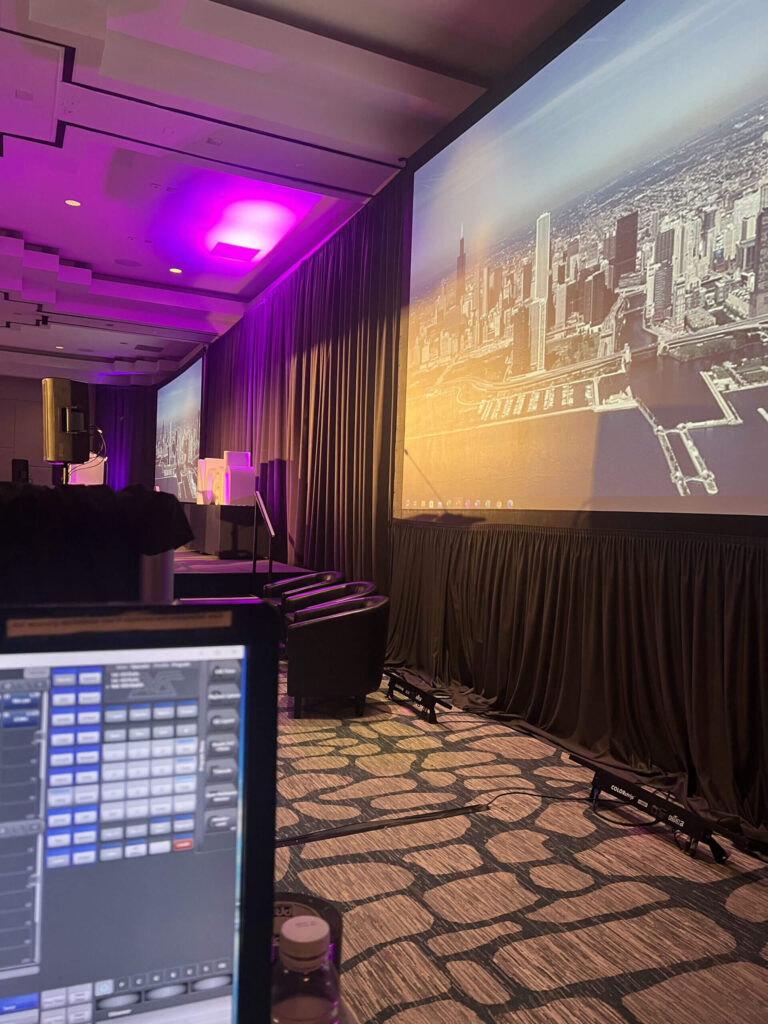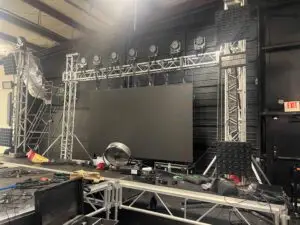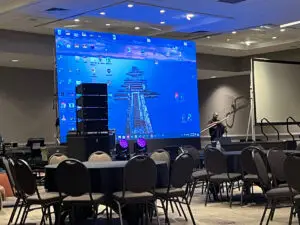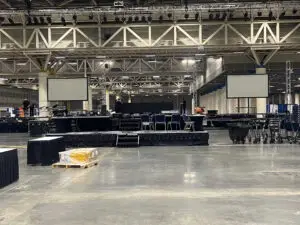Keeping people engaged during a Virtual Events takes more than just logging into a platform and hitting “Go Live.” Attention spans are short, distractions are everywhere, and if your event doesn’t grab people early, you’ll lose them fast.
By using expert speakers, dynamic hosts, interactive tools, and clear communication, you can create a virtual experience that not only captures attention but keeps participants invested throughout every session.
When planning a successful virtual events, partnering with an experienced Audio Visual production company can make all the difference. AV companies specializing in hybrid events offer a range of technical and creative solutions. These services are tailored for various event types, such as corporate meetings, conferences, galas, virtual trade shows, educational workshops, and many more.
Below are 12 simple but powerful strategies to increase engagement and keep your audience interested from start to finish.
12 Tips on How to Increase Engagement in Virtual Events
1. Have Exciting Content
If the content isn’t interesting, people will leave. That’s the hard truth of virtual events. So, you have to start with an engaging hook and keep things moving.
Break your content into short, focused sections. Don’t let any segment drag. Use data, examples, and real-life stories. Raw information isn’t enough; people need context. Share case studies, numbers that back up your points, or before-and-after scenarios to keep the message grounded and believable.
If you’re using slides, keep them simple, with just a few words and strong visuals. Avoid reading slides word-for-word. That makes people tune out.
You can also mix up how content is delivered. Add a short video. Show a demo. Play a clip that supports the topic. Keep people curious about what’s coming next.
2. Pick Inspiring Speakers
A speaker is a very important part of any virtual events. A speaker’s energy, tone, and message can decide whether attendees stay engaged or drop off. If they sound bored, attendees will feel it and are likely to leave.
Always choose speakers who are confident about your event topic and speak in a clear, direct way. A good speaker can understand your audience and can hold attention without overloading them with slides or information.
3. Keep the Event Flowing with a Skilled Live Host
A live host keeps your virtual events organized and engaging. They guide the audience from one segment to another without making things feel forced or awkward.
The host’s job is simple but essential. They open the event, introduce each speaker, and keep energy high between sessions. If there’s a delay or technical issue in the event, the host fills the gap with useful or light conversation. They also engage the audience through chat, shout-outs, and quick updates.
Hire a confident, energetic host who understands your event’s purpose. Keep them visible throughout the program to guide flow, maintain momentum, and keep the audience focused.
4. Initiate Live Polls to Reduce Audience Fatigue
Attending events for a long period can be boring and draining. Attention drops quickly when there’s no way to interact. Live polls help fix that. It provides attendees with something to do.
Polls don’t have to be complicated. You can ask a simple question about any topic, gather quick feedback, or get the audience’s opinion before moving into the next part of your session.
Polls also help you learn what the audience is thinking in real-time. If most people vote a certain way, the speaker can respond directly to that insight. That kind of feedback loop keeps the event active and connected.
5. Drive Engagement Through Real-Time Q&A Sessions
Live Q&A sessions held during a virtual events keep attendees engaged and interactive. Attendees can speak up, ask questions, and shape the discussion as it happens.
Q&A session creates a two-way exchange. Attendees aren’t just listening, they’re contributing. It gives people a reason to stay focused and makes the content feel more personal and relevant.
6. Build Networking Opportunities That Encourage Meaningful Connections
One of the biggest challenges with any event is that attendees often feel isolated and exhausted.
Allow time for networking in the middle of events. Attendees want to meet and connect with other attendees who share their interests or work in the same field. When you give them space to connect, the event becomes more valuable. Schedule dedicated time for interaction and indicate it in the agenda.
You don’t need to overcomplicate it. Simple breakout rooms, group chats, or small discussion tables work well. Let attendees join based on topic, role, or industry. This gives them something to talk about right away.
7. Create Fun Experiences
Virtual events can feel serious and repetitive if every session follows the same format. Adding small, fun experiences helps break the pattern and keeps people interested. It gives attendees a mental break without making them lose focus.
Fun activities can be a short quiz, a virtual photo booth, a live music break, or even a casual contest with small prizes. These quick activities help reduce screen fatigue and make the event more enjoyable.
When people enjoy themselves, they stay longer, participate more, and leave with a better impression of the event. It also gives them something to talk about, which can spark more interaction in chats and on social media.
8. Keep Attendees Informed with Clear Agendas and Timely Reminders
People nowadays have a short attention span and a busy schedule. If they’re unsure when a session starts or what it covers, they’re more likely to miss it or drop out of the event early. Events with Clear agendas and reminders help avoid confusion and keep everyone on track.
An agenda tells attendees what to expect from the event. It shows them the topics, start times, session lengths, and speakers. When people know what’s coming next, they can plan their time and stay engaged throughout.
Reminders are important, especially for the people attending virtually. Even if someone registers, they might forget the event if they don’t hear from you again. A few well-timed reminders can bring them back and reduce no-shows.
9. Add Interactive Gamification
Gamification gives people a reason to stay active during your virtual events. Simple games or point systems turn passive viewing into a more engaging experience.
Games help to keep the virtual events interactive and fun. Attendees can earn points by answering polls, asking questions, visiting virtual booths, or joining breakout rooms. You can display a live leaderboard to show who’s earning the most points. Offer small rewards, gift cards, and free resources to make it fun and competitive.
This kind of interaction keeps people alert and engaged.
10. Reinforce Your Message with Strong Visual Branding
Strong visuals help attendees stay focused and engaged in your event. Consistent branding across slides, backgrounds, and virtual platforms creates a professional look.
Use your event colors, logos, and fonts clearly throughout the event.
Keep messaging clear and concise on all screens.
Add name tags during each speaker session to reinforce professionalism. This also helps attendees recognize who is speaking.
Visual branding supports your event’s tone and builds trust. When attendees see a consistent look for your event, they take the event more seriously and stay engaged longer.
11. Ensure Accessibility for All Attendees
Accessibility means making your event usable for everyone. This increases engagement by removing barriers and showing you value all participants.
Provide subtitles for all live and recorded sessions of the event. This can be helpful for attendees with hearing challenges and supports non-native speakers.
Offer screen reader compatibility on your event platform so visually impaired attendees can navigate easily. Check that your website and apps meet basic accessibility standards.
Make sure the audio quality is clear and consistent. Poor sound makes it hard for anyone to stay focused.
Include sign language interpreters when possible. This makes it easier for specially abled attendees.
By making accessibility a priority, you create a welcoming environment where everyone can participate fully. This improves overall satisfaction and engagement.
12. Promote Early to Drive Attendance and Build Anticipation
Promoting your event before it starts helps attract the right audience and builds excitement among participants.
Start promoting your virtual events early with clear messaging and an agenda about what attendees will gain by joining. Use social media and email campaigns to reach your existing contacts. Personalize invitations and include strong calls to action.
Create a dedicated and easy-to-navigate event landing page with all essential details of the events and easy registration options.
The more visibility you create earlier, the higher the attendance and engagement will be.
Conclusion
Virtual events succeed when people stay engaged from start to finish. That means more than just showing slides or delivering speeches, you need interaction, clear communication, and small moments that hold attention.
Each of the strategies above helps create a better experience. Add one or two to your next event or apply them all, and you’ll see the difference. Your attendees will stay longer, participate more, and leave with something worth remembering.
If you want expert support to bring it all together, Huview Productions is here to help. Huview Productions is a trusted audiovisual production company in Atlanta, providing AV services for Corporate Clients, Event Planners, Nonprofit Organizations, Educational Institutions, trade shows and exhibitions, the government and public sector, and creating virtual events that connect with people. From live streaming to interactive elements, we’ve got the tools and team to make it work.







